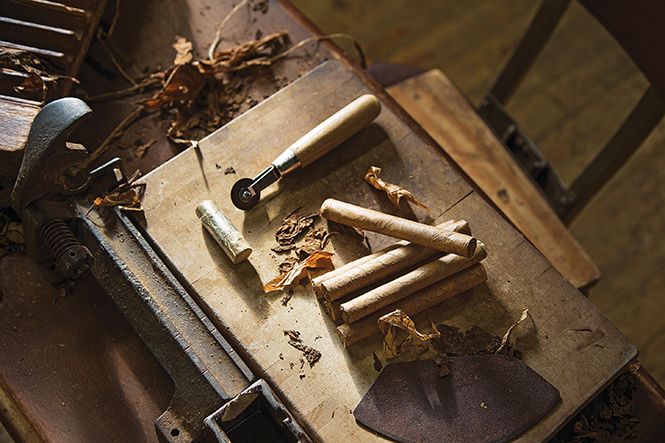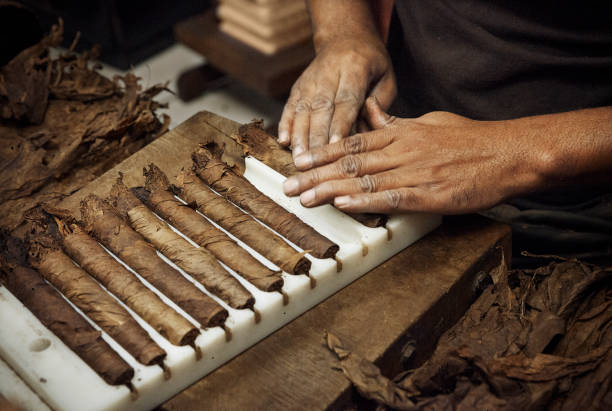Rolling cigars is a meticulous and time-consuming process that requires skill and expertise. Here is a brief overview of the steps involved in rolling cigars:
- Harvesting: The process starts with the harvesting of tobacco leaves. The leaves are then hung in a curing barn where they will dry and undergo a fermentation process.
- Sorting: Once the tobacco leaves are ready, they are sorted by size, strength, and color.
- Blending: The next step is blending different tobacco leaves to create the desired flavor and strength.
- Rolling: The actual rolling process begins with the creation of a “bunch” of tobacco leaves. This is the core of the cigar and provides the structure for the final product. The bunch is then wrapped in a binder leaf and the wrapper leaf is applied to the outside. The cigar is then shaped and cut to size.
- Aging: Once the cigars are rolled, they are placed in a humidor to age for several months or even years. This allows the flavors to develop and the tobacco to mellow.
Hand-rolled (hand made, or ‘totalmente a mano’)cigars are considered to be of higher quality than machine-made cigars. This is due to the care and attention that goes into the rolling process. Hand-rolled cigars are made by skilled artisans who have spent years perfecting their craft. Each cigar is rolled individually, allowing for greater control over the final product.

Hand-rolled cigars are also more consistent in terms of flavor and draw. Machine-made cigars may have inconsistencies in the tobacco blend, resulting in a less satisfying smoking experience.
Finally, hand-rolled cigars are often made using higher quality tobacco, which results in a superior flavor and aroma. The attention to detail and the use of high-quality ingredients make hand-rolled cigars a true luxury item.
